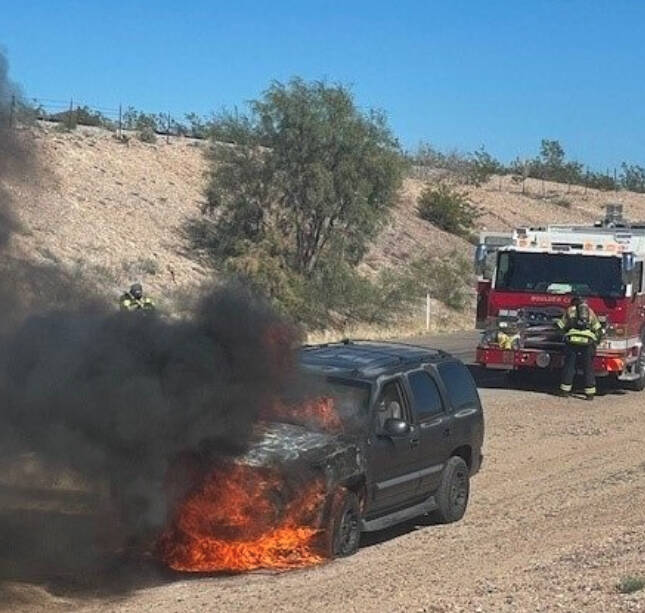FD response times continue to be a challenge
When it comes to the current state of the Boulder City Fire Department, the overall headline news depends largely on which set of statistics you look at.
One one hand, the department has a Center for Public Safety Excellence certification that relatively few departments in the country have, ground has been broken on a new training facility that may result in less overtime expense and customer service surveys come in consistently in 98-99% range.
On the other hand, response times for both fire and paramedic calls fail consistently to meet standards and, in most cases internal department goals, there is no full-time permanent fire chief and a second fire station has gone from immediate planning stage to a “long-term” goal with no stated timeline for beginning, much less completion.
After announcing plans to build a substation, to significant press coverage and general hoopla, in March of 2023, by September, when former Fire Chief Will Gray gave his annual report to the city council, the projected cost had more than doubled to $3.9 million and the entire project was put on the back burner.
Meanwhile, the city is still on track to spend more than $40 million on a new municipal pool.
Performance gaps
Acting Fire Chief Greg Chesser told the council that the area defined as Urban 1 (which covers the majority of the populated parts of the city) meets “industry standards” with only the are called Urban 2 (which includes the Del Prado and San Felipe areas on the east side, plus areas to the north of town including Temple Rock, Keys, Hemenway and Lake Mountain) failing to meet standards.
However, the PowerPoint presentation he showed during the meeting included slides for average response times for both paramedic (EMS) and fire calls showed the department not meeting any standards for EMS calls and meeting only one standard for fire calls in Urban 1 and missing all standards for both types of calls for Urban 2.
Chesser pointed out that the stats presented include five years of data. “We’re still dealing with 2020 data, which I call bad,” he said also noting the positive trends in meeting standards over the past several years.
In the 2024 fiscal year (which ended on June 30), the BCFD responded to 2,132 EMS calls, a 10% increase over the previous year. In 1,759 of those calls, someone was transported to a local hospital.
The hospital a patient is transported to depends on both the type of issue and the preferences of the patient. In total, 41% of patients went to Boulder City Hospital, 31% went to St. Rose Sienna in Henderson and 25% went to Henderson Hospital.
Overtime costs
While the new training tower has been touted as a way to lower overtime costs by negating the need for firefighters to travel to other departments in the Las Vegas Valley for training, it is not yet complete and so its impact on overtime is not yet known.
When former chief Gray did an exit interview with the Review in April, he cited a disagreement about overtime as being a driver in his firing. He said that he had advocated for the hiring of three new firefighters in order to cut overtime costs but that he got pushback that the union did not want the additional staff unless daily minimum staffing was also increased. But that increase would have actually led to greater overtime costs.
As one of the proposed solutions to the issues in response time, Chesser advocated just such a change in minimum staffing.
Substation on hold
The proposed substation was not just about response times for areas of the city further away from the current fire station. The report presented to the council also lays out the fact that the current station lacks enough sleeping quarters for the daily staffing levels advocated by the department at this time.
The solution offered was to move administrative staff to a different, unspecified location and to convert the current office area into sleeping quarters and a captain’s office.
The substation, originally announced in 2022, has been transferred to the “long-term” column. “Our proposed solution would be to evaluate and plan for a future fire station,” Chesser said. “I noted long term on there. I think with the limited resources available, the best course right now is to look at this as a long-term plan. It’s not a short-term plan.”















